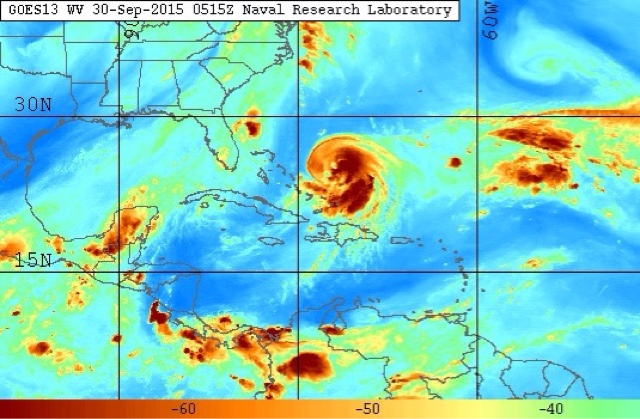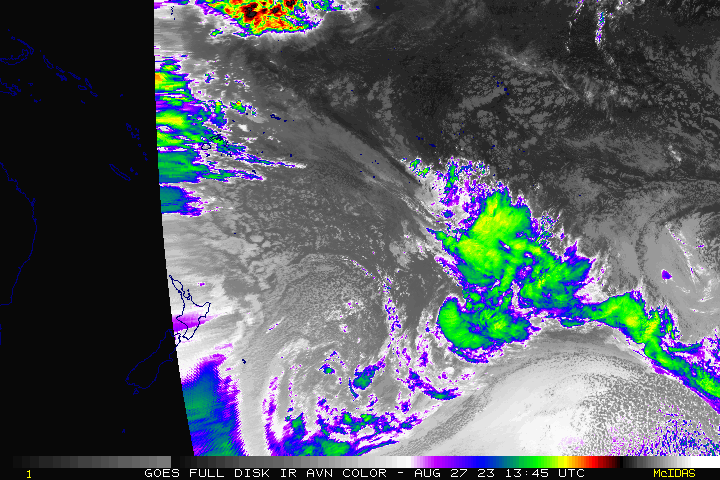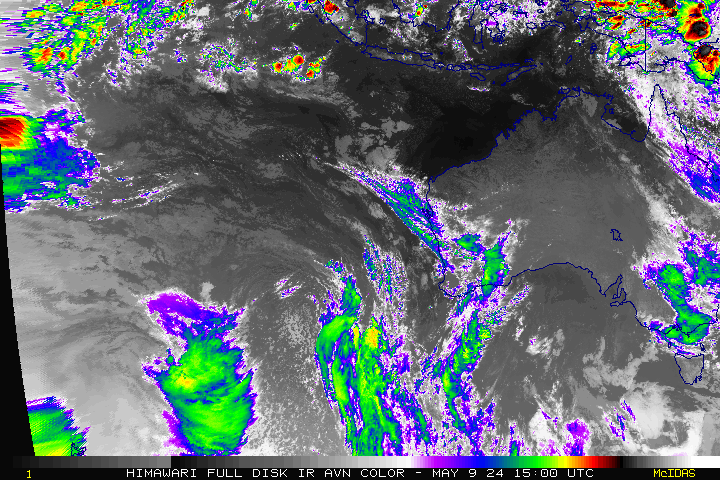Update: September 28, 2015, 0130 GMT
The outer periphery of this category 4 hurricane is entering Taiwan. For the next 12 hours winds of 220 km/hr, gusts up to 260 km/h will lash the country.
Typhoon Dujuan will start weakening soon and will be a category 1 cyclone when it enters Fujian province of China tomorrow.
 |
| 0030 GMT today satellite image shows Dujuan is entering Taiwan |
Update 0330 GMT, September 26, 2015
The typhoon is about 950 kilometres from the Taiwan coast. Dujuan will make direct hit on the northeast part of the country on September 29. It will pass through Taipei. It will be a category 4 cyclone with sustained winds of 230 km/ h.
On September 29 it will weaken and enter Fujian province of China. Fuzhou will be badly affected.
 |
| Track forecast of Typhoon DUJUAN |
Update 0600 GMT, September 24, 2015
It is now almost certain that the target of typhoon Dujuan is China. The Fujian province just south of Shanghai. Though some forecast models say Shanghai itself may be where landfall may occur.
Time of impact is September 29, 2015. Before hitting China Dujuan will move dangerously close by the Taiwanese coast on Monday. Taipei will be affected.
Dujuan is already intensifying. Within the next 48 hours it will become a category 4 hurricane with winds in excess of 220 km/h. Though it is expected to weaken before nearing Taiwan.
It is presently about 1325 kilometres ESE of Taipei.
 |
| Latest track forecast for typhoon Dujuan |
Updated 1330 GMT, September 23
Typhoon Dujuan: Where will it go?
There is wild disagreement presently. One computer model says it will slam into Kyushu, Japan.
Another says it will pass though northern Taiwan and then hit China coast below Shanghai on September 28, 2015.
_--------------------------
Even as Japan grapples with imminent threat from typhoon DUJUAN, there is bad news for countries in the Western Pacific Ocean. In the first week of October a low pressure area will slip in from the central Pacific which after entering west Pacific will intensify into a howling monster super typhoon called MUJIGAE.
We will monitor closely the possibility of the storm and then it's track once it forms.
Bad news. DUJUAN is a baby compared to MUJIGAE if GFS forecasts are to be believed.
Below is a visualisation of the typhoon on October 8, 2015. Frightening.
Track western Pacific storms live at
==========================
Even as possibility of a Bay of Bengal storm threatening the Indian East coast increases, a typhoon called DUJUAN in the west Pacific Ocean is worrying Japanese authorities.
And they worry with a good reason. Typhoon DUJUAN is going to turn into a nasty category 4 hurricane and slam into Kyushu island in southern Japan on September 30, 2015. Though other forecast models say the cyclone will miss Japan and swing away harmlessly into northern Pacific.
Latest satellite image of tropical storm DUJUAN. It is already quite a powerful storm. The Pacific Ocean throws out some of the most powerful cyclones on earth. Much bigger than an average Indian Ocean or Atlantic Ocean hurricane.
Though the Japanese are used to them as they face them frequently, it does worry them. If a super cyclone makes a direct hit without weakening it can cause havoc. Typhoon Haiyan in 2013, hurricane Katrina in the US and the super cyclone of Orissa in 1999 are examples.




















